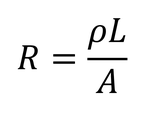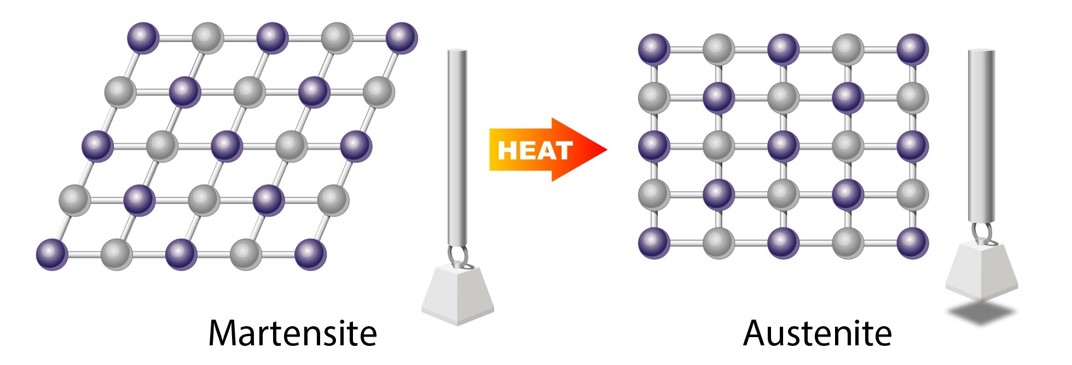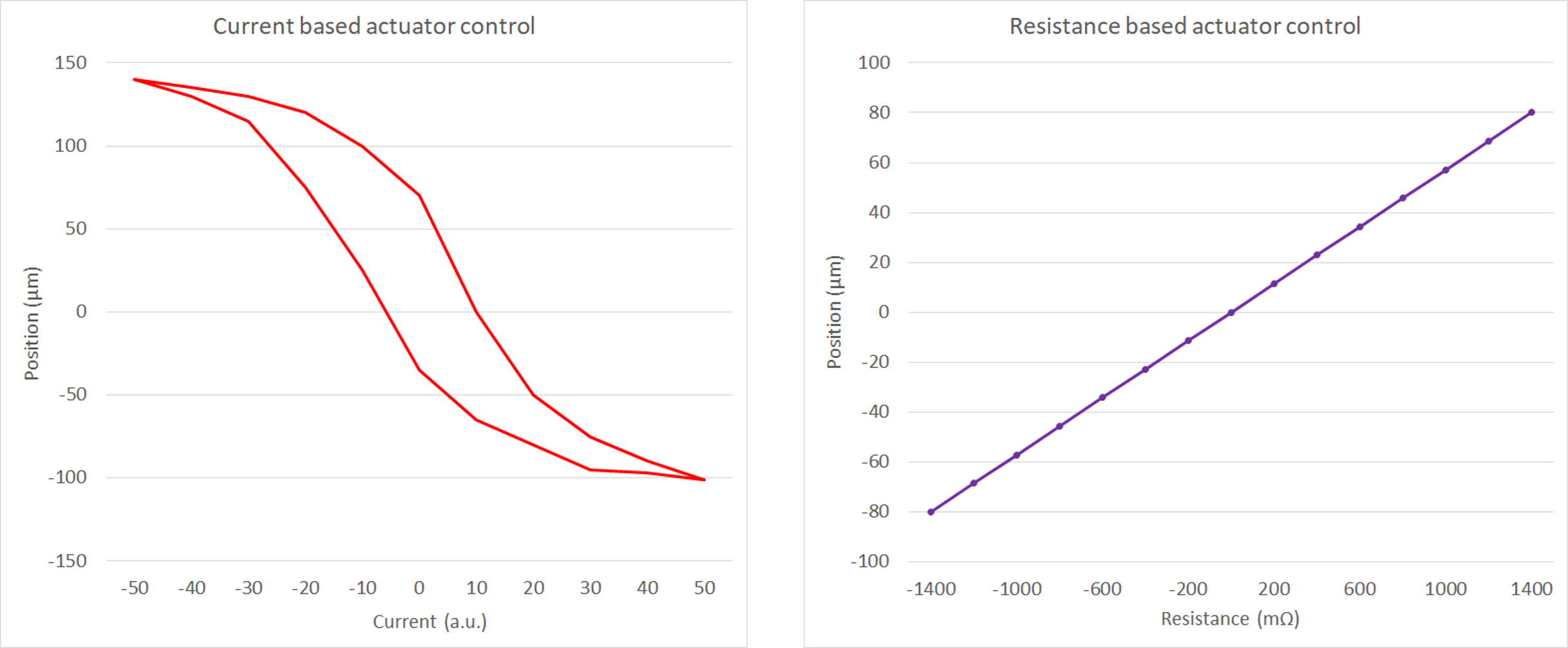13 Sep 2023
Controlling Shape Memory Alloy actuators
By Bronwen Derry, Director of SMA Technology
Shape Memory Alloy (SMA) based actuators are enabling new designs, features and performance capabilities in consumer electronics and other industries that require compact form factors. Cambridge Mechatronics Ltd (CML) is a pioneer in SMA technology, using the SMA wire as both actuator and sensor. This results in a single-piece motor as thin as a human hair, which can be controlled to the accuracy of the wavelength of light. No position sensor is required, saving space and cost!
For high-accuracy applications, most motion control systems use feedback control. This involves taking measurements of the position with a sensor and making a calculated adjustment to any position error using the actuator. In conventional systems this requires separate components to act as a sensor, for example a Hall sensor and magnet, which are used in conjunction with a VCM (Voice Coil Motor) actuator.
Uniquely, an SMA wire can act as both an actuator and a position sensor.
SMA wire contracts significantly when heated, creating large forces and motion with respect to its size. Therefore, it is well suited for compact applications requiring strong and precise actuation. In order to provide closed-loop control and performance that meets customers’ demanding specifications, CML has developed its unique control of SMA actuators based on two fundamental principles:
- Resistance Feedback control
- Opposing Wire configuration
1. Resistance feedback control
Central to the system control is the wire resistance, which directly correlates with the length and inversely with its cross-sectional area, which widens when heated.

Here, R is the resistance, L is the length, A is the cross-sectional area, and ρ is the Resistivity.
SMA undergoes a microstructure change when heat is applied, and this change in crystal structure drives the change in shape, which provides the motion whilst at the same time providing position sensing through the wire resistance.
 Shape Memory Alloy crystal phases and how these relate to wire length and width
Shape Memory Alloy crystal phases and how these relate to wire length and width
Consequently, longer and thinner wires have a higher resistance compared to their shorter, thicker counterparts. Therefore, wire resistance is proportional to the wire length giving the positional measure of the actuator in X, Y and Z.
VCM control with current is well known to be hysteretic, and the native motion vs wire temperature (or current) for SMA is also very non-linear and hysteretic and therefore can be difficult to control. However, CML’s resistance control gives a linear response with respect to position, allowing for accurate control. Cambridge Mechatronics Ltd. (CML) is the first company in the world to precisely control the contraction of SMA wire in this way. The wire resistance is measured at >10kHz allowing for high frequency positional micro-adjustments. This dynamic feedback mechanism facilitates fast and precise actuator control allowing for optical-grade precision in component positioning.
 Current vs Resistance based actuator control
Current vs Resistance based actuator control
2. Opposing wire configuration
CML designs actuators in an opposing wire configuration, as shown below. In simpler terms, two wires are used in tandem, with each acting in opposition to the other. This setup not only establishes a counterbalance but also enables unparalleled precision in actuator positioning. Employing Pulse Width Modulation (PWM) drive to individually control current to each wire, we can meticulously modulate the power delivery, effectively overseeing the wire heating. Operating typically within consumer electronics standards, the voltages range between 2.8 to 3.2 volts.
Conclusion
We have shown that CML is uniquely able to use the SMA wire as both an actuator and position sensor for closed-loop control. Opposing wire mechanical designs are combined with resistance control to deliver the performance specifications demanded by our customers.
By way of an example, the plot to the right showcases sub-micron positional control represented by the blue line. The black line signifies the measurement noise of our test system, which is in line with the position stability of the actuator of ~100nm. This actuator was designed to deliver super-resolution position shifts in cameras or facilitating wobulation in display technologies.
CML’s SMA platform technology enables the most compact form factor for any actuator application where a high level of precision and force is required. CML’s multidisciplinary team are building tailored system solutions for smartphone camera AF and OIS, augmented reality and haptics.
ABOUT CML: Cambridge Mechatronics Limited (CML) is a world-leading developer of mechanical, optical, electrical, silicon and software designs for system-level solutions using its Shape Memory Alloy (SMA) platform technology. Solutions such as ACTUATORS based on SMA wire (which is as thin as a human hair) can be controlled to the accuracy of the wavelength of light. These actuators are particularly suited to applications that require high levels of precision and force, in a fast, compact and lightweight design.
For more details about SMA technology and Cambridge Mechatronics, please GET IN TOUCH.

